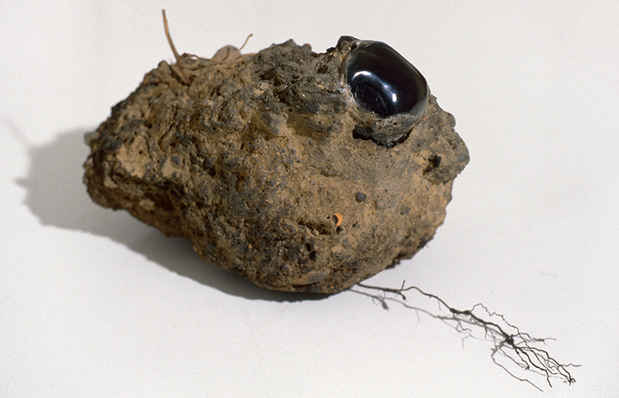David Nelson Exhibition
80 Washington Square East

This event has ended.
80WSE Gallery presents the exhibition DAVID NELSON, the first major institutional solo presentation of the artist’s work, from September 9 through October 24, 2015. The exhibition will represent the wide range of mediums which constituted Nelson’s practice, including painting, drawing, photographs, photograms, and sculpture.
DAVID NELSON is organized by Jonathan Berger and Nancy Brooks Brody in collaboration with the Estate of David Nelson and students from the NYU Steinhardt Department of Art and Art Professions. An opening reception will be held on September 9 from 6-8pm.
“David’s life’s work is like a piece of poetic prose that never stopped, often rhyming themes and motifs as it moved through many mediums, remaining constant in its production despite his disease, unrecoverable losses, and battle with addiction,” said Berger. “This exhibition is not only about the power of the work it contains. It is about the endurance, belief, and discipline required for making art to be central to your whole life. This is an exhibition that has been organized by and for artists, about one of the best. Because David truly was the artists’ artist, and his work is fundamental to a history of art that we believe we must write ourselves.”
David Nelson (b. 1960, d. 2013) moved to NYC and began making art in late 1970s. In the 1980s he established a studio on 14th Street and became friends with the artists Bobby Bordo, Nancy Brooks Brody, Joy Episalla, Tony Feher, Zoe Leonard, Angela Muriel, Nick Rule, and Carrie Yamaoka. This peer group’s formative years coincided with the onset of the AIDS crisis, which further established their comradery and led to many of them becoming involved with the organization ACT UP (The AIDS Coalition to Unleash Power) during the 1980s and 1990s.
In 1985 Nelson met the artist David Knudsvig, who remained his romantic partner up until Knusvig’s death from AIDS in 1993. Soon after Knudsvig’s death, Nelson travelled to Paris where he presented the first exhibition at Tracy Williams Gallery’s newly formed project space in Paris, which occupied an old apartment. The state of grief under which the exhibition came to fruition galvanized a core group of themes and motifs in Nelson’s work, concerning the passage between life and death, which remained central and permeated the entirety of the artist’s creative production up until his death in 2013.
Nelson was an avid collector of vintage curios and specimens of natural history. He transformed his small apartment into a domestic museum, or wunderkammer, filled with an eclectic assortment of found objects that spoke to his interests and informed his artistic practice. On his dresser, Knudsvig kept a small wooden figurine of a man with a removable top hat that contained a pair of dice made from bone. Upon his death, Nelson placed the figure next to his own toy train and named the hybrid object the “train man,” going on to make him a recurring character in numerous bodies of work in various mediums. The character himself, as well as his role of conductor, bears striking resemblance to the Haitian Vodou deity “Papa Ghede,” believed by practitioners to be the corpse of the first man who ever died, and whose role in the religion is to guide souls in to the afterlife. In a large series of photograms from 1994, Nelson rendered the figure in sand, an act that is also common practice in Vodou rituals. While Nelson created the “train man” character (and the photograms) without the knowledge of Papa Ghede, his later discovery of these connections may have led to its reappearance as a protagonist in his work.
In 1994 Nelson discovered and excavated a cistern in the yard of his home and studio on East 5th Street. The well-like structure and its function resonated with his creation of the “train man” and prescient interest in portals, tunnels, and the act of passage from one dimension to the next. Soon after, he began digging holes in his yard, in to which he would pour synthetic clear resin, later pulling the cured casts from the ground and with them the dirt and roots that had attached themselves. These sculptures, which Nelson referred to as “holes,” existed as a positive document of a negative space, created through the act of digging—both a child like act of curiosity and a desperate need to escape.
These themes continued to evolve through Nelson’s ongoing involvement with photograms, made simply by placing objects and materials on emulsion coated paper in a darkroom, exposing it to light and developing it. The resulting prints present the image in negative, creating lush, flat black, void like surfaces on which floated delicate white ghostly pictures. Among the recurring motifs in this body of work is the image of the hourglass, which also appears broken with the sand that it had contained spilled. Nelson had begun using hourglasses in his work after being diagnosed with HIV in 1990, shortly before Knudsvig’s death.
After a nearly 20 year hiatus from painting, Nelson began to paint again in 2003, trading in the blacks, browns, whites, and greys that dominated his work in the 1990s for a wide array of pastel colors. The imagery of holes, tunnels, and portals were transformed into abstracted versions of eyes and mouths that often sit on the surface of the painting and through which under layers are revealed. These late paintings speak most directly to the human body and its frailty and yet their light, often washed out color palate casts the final chapter of Nelson’s exploration in a distinctly different tone.
The exhibition is accompanied by a fully illustrated publication designed by Julian Bittiner, including texts by Jonathan Berger and Nancy Brooks Brody, and interview with David Nelson conducted by his gallerist, Nick Debs, in 2000. The publication is co-published with Visual AIDS.
Media
Schedule
from September 09, 2015 to October 24, 2015
Opening Reception on 2015-09-09 from 18:00 to 20:00